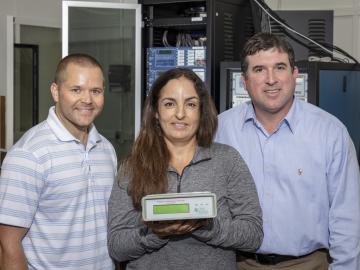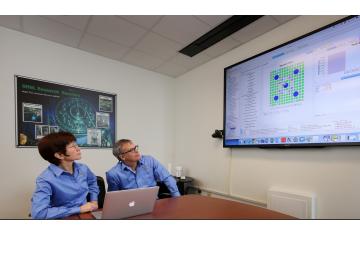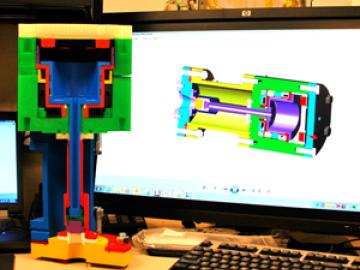
Filter News
Area of Research
News Topics
- (-) Artificial Intelligence (4)
- (-) Big Data (4)
- (-) Chemical Sciences (4)
- (-) Energy Storage (3)
- (-) Frontier (4)
- (-) Grid (4)
- (-) Nuclear Energy (6)
- 3-D Printing/Advanced Manufacturing (2)
- Bioenergy (14)
- Biology (17)
- Biomedical (5)
- Biotechnology (2)
- Buildings (4)
- Clean Water (2)
- Composites (2)
- Computer Science (12)
- Coronavirus (3)
- Cybersecurity (5)
- Environment (25)
- Exascale Computing (3)
- Fusion (6)
- High-Performance Computing (7)
- Hydropower (3)
- Isotopes (4)
- ITER (1)
- Machine Learning (4)
- Materials (8)
- Materials Science (6)
- Mercury (1)
- Microscopy (8)
- Molten Salt (1)
- Nanotechnology (4)
- National Security (7)
- Neutron Science (5)
- Partnerships (1)
- Physics (3)
- Polymers (3)
- Quantum Computing (5)
- Quantum Science (3)
- Security (4)
- Simulation (3)
- Space Exploration (1)
- Summit (4)
- Transportation (6)
Media Contacts

The rapid pace of global climate change has added urgency to developing technologies that reduce the carbon footprint of transportation technologies, especially in sectors that are difficult to electrify.

Surrounded by the mountains of landlocked Tennessee, Oak Ridge National Laboratory’s Teri O’Meara is focused on understanding the future of the vitally important ecosystems lining the nation’s coasts.

A rapidly emerging consensus in the scientific community predicts the future will be defined by humanity’s ability to exploit the laws of quantum mechanics.

A team of scientists led by the Department of Energy’s Oak Ridge National Laboratory and the Georgia Institute of Technology is using supercomputing and revolutionary deep learning tools to predict the structures and roles of thousands of proteins with unknown functions.

As Puerto Rico works to restore and modernize its power grid after last year’s devastating hurricane season, researchers at Oak Ridge National Laboratory have stepped up to provide unique analysis, sensing and modeling tools to better inform decisions.

Oak Ridge National Laboratory scientists have developed a crucial component for a new kind of low-cost stationary battery system utilizing common materials and designed for grid-scale electricity storage. Large, economical electricity storage systems can benefit the nation’s grid ...

A tiny vial of gray powder produced at the Department of Energy’s Oak Ridge National Laboratory is the backbone of a new experiment to study the intense magnetic fields created in nuclear collisions.
For the past six years, some 140 scientists from five institutions have traveled to the Arctic Circle and beyond to gather field data as part of the Department of Energy-sponsored NGEE Arctic project. This article gives insight into how scientists gather the measurements that inform t...


ITER, the international fusion research facility now under construction in St. Paul-lez-Durance, France, has been called a puzzle of a million pieces. US ITER staff at Oak Ridge National Laboratory are using an affordable tool—desktop three-dimensional printing, also known as additive printing—to help them design and configure components more efficiently and affordably.


